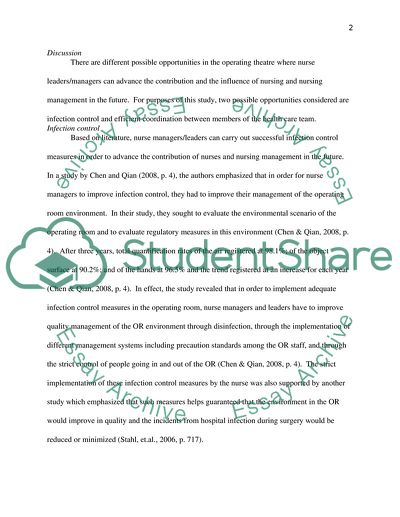Cite this document
(Nursing Leadership and Management Assignment Example | Topics and Well Written Essays - 2500 words, n.d.)
Nursing Leadership and Management Assignment Example | Topics and Well Written Essays - 2500 words. Retrieved from https://studentshare.org/nursing/1745000-identify-critically-discuss-two-opportunitiesin-your-area-of-practicewhere-nurse-leadersmanagers-can-advance-the-contribution-and-influence-of-nursing-and-nursing-management-in-the-future
Nursing Leadership and Management Assignment Example | Topics and Well Written Essays - 2500 words. Retrieved from https://studentshare.org/nursing/1745000-identify-critically-discuss-two-opportunitiesin-your-area-of-practicewhere-nurse-leadersmanagers-can-advance-the-contribution-and-influence-of-nursing-and-nursing-management-in-the-future
(Nursing Leadership and Management Assignment Example | Topics and Well Written Essays - 2500 Words)
Nursing Leadership and Management Assignment Example | Topics and Well Written Essays - 2500 Words. https://studentshare.org/nursing/1745000-identify-critically-discuss-two-opportunitiesin-your-area-of-practicewhere-nurse-leadersmanagers-can-advance-the-contribution-and-influence-of-nursing-and-nursing-management-in-the-future.
Nursing Leadership and Management Assignment Example | Topics and Well Written Essays - 2500 Words. https://studentshare.org/nursing/1745000-identify-critically-discuss-two-opportunitiesin-your-area-of-practicewhere-nurse-leadersmanagers-can-advance-the-contribution-and-influence-of-nursing-and-nursing-management-in-the-future.
“Nursing Leadership and Management Assignment Example | Topics and Well Written Essays - 2500 Words”, n.d. https://studentshare.org/nursing/1745000-identify-critically-discuss-two-opportunitiesin-your-area-of-practicewhere-nurse-leadersmanagers-can-advance-the-contribution-and-influence-of-nursing-and-nursing-management-in-the-future.


